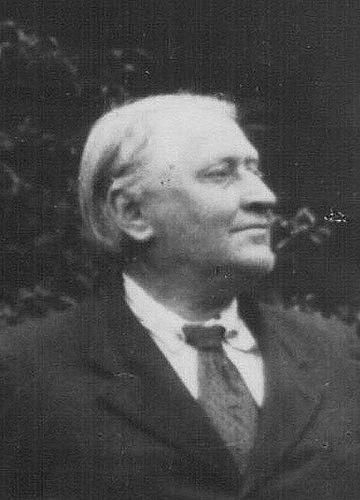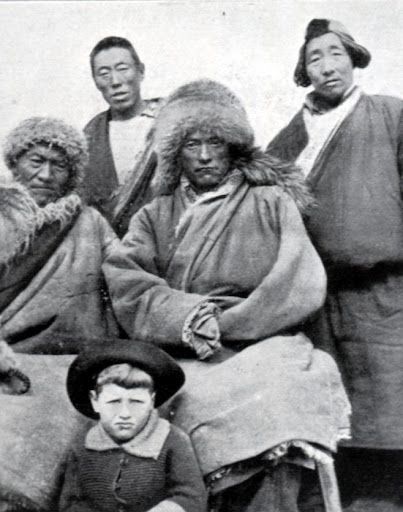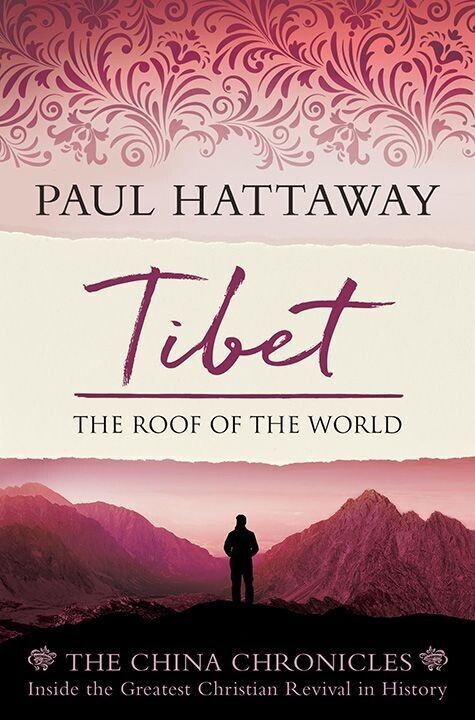Huston Edgar

The difficulties and extreme isolation of work among the Jiarong took a toll of many prospective missionaries, but for the first three decades of the 20th century, efforts to reach the Jiarong were spearheaded by a resilient New Zealander, James Huston Edgar.
Born in 1872, Huston, as he was known to friends, grew up in the rugged mountains and fresh air of the Central Otago region in New Zealand's South Island. After leaving home at the age of 14, the rugged bush life and hard work that Edgar experienced proved to be ideal preparation for a rugged life among the Jiarong.
After Edgar married newly-arrived Australian missionary Lily Trudinger at Chengdu in October 1902, the couple made their way to the strategic border town of Kangding, which was to be their home for most of the next 33 years. It was said of Edgar:
"Death held no fear for him; his quiet blue eyes often looked in its face. Lawless brigands, angry lamas, savage dogs and intense cold—none of these things could make him turn aside from his purpose.... His ambition as a missionary was to do something extraordinary, something that possibly no other missionary had done before. If no missionary had been there before, well, he wanted to go."
Huston Edgar was a tireless servant of God, often trekking over mountain passes up to 18,000 feet (5,486 meters) above sea-level. He was a rugged individualist, and once when asked if he liked working alone, he replied: "Yes! I prefer being by myself, for various reasons. It is a very rough life which few can stand, and it would often have increased my difficulties to have had another missionary with me."
Edgar also had an aversion to publicity, and despite his long career which spanned more than three decades, no photograph of him was published in any mission publication, nor was his image to be found in a small book he wrote in 1908. So remote were some of the areas Edgar wandered through, it is believed he was one of the first foreigners to see giant pandas in their natural habitat in China.
Edgar's unique call was distinguished by many remarkable escapes from danger, and a relentless drive to share the gospel with everyone he met, mostly by distributing gospel literature. He was often in peril, was threatened by armed bandits on numerous occasions, and frequently came across the decapitated bodies of murder victims on the remote trails he used.
The pioneer had boulders rolled down hills at him, was often pelted with rocks, and on more than one occasion the Tibetan lamas set their savage attack dogs on him. Through these and countless other incidents, God preserved His servant and enabled him to continue to spread the light of the gospel to thousands of lost people.
The New Zealander's annual reports make interesting reading, and provide glimpses into his grueling schedule. In 1914, Edgar reportedly "traveled 2,025 miles [3,280 km], and sold more than 13,000 Scripture portions and other Christian booklets, about one-fourth being in Tibetan script."
Missionaries at the time tended to sell Christian literature if possible, as they believed that people would appreciate it more if they paid than if it was just handed to them for free. Charging a nominal sum assured that the recipient actually wanted the item and was not merely taking it to be polite. The literature was sold at well below cost, so it was not a money-generating exercise for the missionaries.
Edgar's 1915 annual report revealed yet another punishing year of exertion for the sake of the gospel:
"I have been on the road nine months out of the twelve, and traversed more than 3,000 miles [4,850 km] on foot and about 1,500 miles [2,430 km] on horseback.... The fiery little revolution...left me unhurt, but the midnight snows nearly froze me to death....
It is easy to prove that the Tibetan portions are valued, for some years ago it was not uncommon to see the leaves attached to poles and doing duty as prayer flags. But it is quite safe to say that this idolatrous homage to the Scriptures is a thing of the past; the people now understand their mission and take them to read or have them read."
Over time, Huston developed good relationships with Jiarong people in diverse locations, and they often rejoiced when he came to visit. He always did his best to share Jesus Christ with his hosts, but language barriers made the distribution of literature vital in order to communicate the truths he so desperately sought to convey. He explained: "I am careful only to leave annotated Gospels and simple tracts, and I am confident much of the literature is understood."
At the start of 1916, Edgar set out on another long journey through regions he described as "the most dangerous part of the most dangerous corner of China." He was loaded down with gospel literature that he planned to distribute to lamas and monks he met along the way, as they were usually the only people who could read. After passing through several villages he reported: "I was out after lamas, and the fact that I left with 160 Tibetan books and came back without any shows that I found them.... I was well treated, and everyone was very eager for Tibetan literature."
Locked up with a Lunatic
Huston Edgar was a very tough and determined man, and no risk was considered too great to take, as long as it involved sharing the gospel with those who had never heard. In a rare interview in 1919, he recalled a few of the more extraordinary situations he had found himself in during almost 20 years of service:
"On more than one occasion I have gone straight forward into central Tibet, even for hundreds of miles, without interference. One tour I made down south was in quite unexplored territory; this part of the country was even prohibited by the Chinese, and if found there without permission, the penalty was death....
In an unknown principality, I was book-selling when a prince shut me up in a tower with a raving lunatic, who was unchained, hoping thus to get rid of me. Fortunately, instead of attacking me, the maniac smashed down the door and broke away, and I was liberated the following day.
Then again, in another principality, floods came, for which I was in some way supposed to be responsible, and the lamas incited the people to attack me. They trooped along the road in pursuit, but were held up by a broken bridge, which had been washed away by the flood. I escaped by climbing over a mountain."
As he neared the age of 50, the seemingly indefatigable missionary continued to lead an exciting, high-energy life among the Jiarong and other unreached groups, while each year he lamented the departure of countless young missionaries who were unable to sustain the pace or endure a fraction of the hardships that Edgar had endured for so many years.
Among the many extraordinary events in Edgar's life, in 1920 he told of a time when he inadvertently "walked into a camp of 400 brigands. They were armed to the teeth and were as alert and efficient as any set of men I have ever seen.... I walked into their camp and began to sell books to them, and the local joke is that I made them pay! I arrived at Fengzhou without incident, and the next day at noon the brigands attacked the town and robbed it clean."
Every day, for many years, Huston Edgar continued his lonely ministry on the Roof of the World, trusting God that His Word would not return void, but would bear good fruit for the kingdom of Jesus Christ. Once he shared his motives and hopes for the strategy of literature distribution that he had tirelessly pursued:
"Bible selling is an especially arduous form of mission work. You cannot guess what awaits, and you must walk long distances, selling as you go. The noise of the chattering, shouting, tramping crowds is peculiarly distressing to many—myself included. Headaches and vertigo invariably follow, and often at night in troubled dreams the work is feverishly continued. Inns, too, are dirty and noisy, while the food is made palatable by hunger and long experience.
Book-selling is lonely work. Every man you see is a stranger, and multitudes are always staring...or insulting the 'man with the Book'... We are here today because the Bible is no ordinary book. It is God's message to man, and as such has a unique power behind it. Bible distribution is like shelling a fortified area; put in enough missiles and vital damage will be done."
A Change of Pace

Edgar was also a family man, and in 1920 Lily gave birth to their fourth child, a son named Oscar. The locals loved him, and even veteran lamas seemed more receptive to the gospel because of the presence of the bubbly boy.
As Huston grew older, and with the needs of a young family to consider, the pace of his ministry slowed down, and he spent more time near his base in Kangding. The wisdom of this change was reinforced by an incident in 1924, when Oscar was kicked in the head by a horse, suffering a deep gash. The Edgar family was ten days' journey from the nearest doctor, but the Lord kept the open wound from becoming infected. Oscar carried a scar on his forehead for the rest of his life.
While in Kangding, Edgar continued to reach out to Tibetan pilgrims who passed through the strategic hub, some of whom had traveled over a month from far-flung parts of the Tibetan world. He humorously noted:
"I have made an effort to put literature in the hands of all visitors to Kangding, and I imagine the Tibetan who returns home without literature is exceptionally elusive and has specialized, as it were, the art of dodging round corners!
My heart is set on Litang, but permission has not been given for me to visit the highest town on earth. But its nomads often come to Kangding. They are gloriously wild and smell like smoked hams seasoned with herbs! But I get in touch with them and bring them at times right through our house! This annoys my wife but interests them greatly, and I am sure the bread cast upon the waters will return in God's time. Indeed, even now nothing but smiles and nods of friendly recognition greet me as I pass along the streets of Kangding."
Scripture for the Jiarong
As the years progressed into the 1930s, reports from the Edgars became less frequent, as Huston was determined to produce the first ever gospel literature in the Jiarong language (using the Tibetan script), to help the people know the love of God. After much hard work, the Gospel of Mark in Jiarong was published in 1932. A mission leader who did a tour of the region with Edgar reported:
"Thousands of Scriptures were distributed, in many cases sold, and it is the simple truth to say they were seldom refused. One of the thrills of the trip was the occasion when for the first time in his life an old man read a tract, the first and only literature ever published in his own Jiarong tongue. The shock of surprise that came over his face as he read and cried out, 'Oh, I understand!' was something not soon to be forgotten."
By 1934, Edgar and other missionaries had distributed 10,000 copies of the Jiarong Gospel of Mark, while two new couples with the CIM—Edward and Marjorie Beatty, and Howard and Merle Jeffrey—were appointed to carry on the work at Barkam, in the heart of the Jiarong region. They were soon joined by Arthur Pocklington and Norman Amos. The new recruits understood that reaching this remote group would cost them everything they had, with Jeffrey noting: "We are not blind to the fact that for a person to open the gates of this barricade and allow the Spirit of the Lord Jesus to enter will probably mean death and almost certainly severe persecution for that person."
A Mighty Tree Falls
Huston Edgar was deeply loved by his peers, and younger missionaries gravitated to him and enjoyed his down-to-earth personality. He had been laboring in one of the world's toughest spots for so long that he had gained an indestructible reputation, but age began to slow him down, and in 1934 he revealed his frustration at his diminished output that year, the result of instability caused by the Communist troops as they passed through the region, slaughtering thousands of people along the way.
Kangding was completely cut off from the outside world, causing Edgar to lament: "This is my worst year, as regards numbers, for more than a decade; and it will live in my memory as the most arduous and irritating in my frontier experience."
The following year, in November 1935, reports emerged that Huston Edgar was ill with heart trouble. A doctor immediately set out on the long journey to Kangding to treat the veteran missionary, but he reported:
"On arrival I found, as I had feared, that Mr. Edgar had a disordered heart. He had a heart attack when I arrived. Mr. Edgar had to pass through an extremely trying time while Kangding was open to the 'Reds.' Unable to escape, and past being able to walk any distance, with no reliable person to help him, he had nothing else to do but sit in the house expecting the 'Reds' to enter at any time."
A few months later, the 64-year-old Huston Edgar passed into the glorious presence of Jesus Christ, while his wife and their four children were in Australia. Despite his long and distinguished career in the Kham region, Edgar remained unknown to the wider Christian world. His death brought few acknowledgements, although one tribute to the pioneer said:
"It would not be inappropriate to term him an apostle to the Tibetans. His knowledge of the people and their almost unexplored country was unrivalled...but it was a source of regret to him that his knowledge in a specialized field had not been made more available to readers. A unique and lovable personality, he gave himself with utter devotion to the exploration and evangelization of Eastern Tibet."
The Edgars' only daughter, Elsie, was born on the mission field in 1905. She became a nurse, and later spent decades serving God among Aborigines in Australia, and she also worked in Korea. She subsequently became the head matron of the Paton Memorial Hospital in the New Hebrides (now Vanuatu). In 1965 Elsie was awarded an MBE (Member of the British Empire) for her sacrificial service, before retiring from the mission field in 1973.
© This article is an extract from Paul Hattaway's book ‘Tibet: The Roof of the World’. You can order this or any of The China Chronicles books and e-books from our online bookstore.
1. Marcus L. Loane, The Story of the China Inland Mission in Australia and New Zealand, 1890-1964 (Sydney, Australia: OMF, 1965), p. 87.
2. "Interview with Mr. J. H. Edgar," China's Millions (January 1919), p. 7.
3. See J. H. Edgar, The Marches of the Mantze (London: China Inland Mission, 1908). The book was a commentary on the Tibetan area where he lived, and did not primarily refer to his missionary work. Edgar later wrote Tibet: The Land of Mystery (London: China Inland Mission, 1930).
4. The first foreigner credited as having discovered the giant panda was French Catholic missionary Arnand David, who noticed the hide of a Panda on a farmhouse wall in 1869. He asked the farmer to take him to where he had shot the animal, and subsequently wrote about the discovery in European journals.
5. China's Millions (April 1915), p. 60.
6. J. H. Edgar, "Pioneering Among the Kin Ch'wan Hordes," China's Millions (May 1916), pp. 60-61.
7. China's Millions (April 1915), p. 60.
8. China's Millions (April 1916), p. 56.
9. Later accounts placed this incident at Drozur, a remote area in the northwest of the Jiarong area, and the buffer between the Jiarong and the wild Golog Tibetan region of Qinghai Province. See J. Howard Jeffrey, "In Eastern Tibet," China's Millions (May-June 1941), p. 43.
10. "Interview with Mr. J. H. Edgar," China's Millions (January 1919), p. 7.
11. George W. Gibb, "The Distressed West," China's Millions (January 1921), p. 11.
12. J. H. Edgar, "'Thy Word is Truth': Report of Church Work and Bible Distribution in Kwanhsien District During 1921," China's Millions (September 1922), p. 134.
13. J. Huston Edgar, "Among the Tibetans," China's Millions (May 1923), p. 77.
14. J. R. Sinton, "The Open Lands of Tibet," China's Millions (March 1933), p. 47.
15. China's Millions (May 1934), p. 91.
16. China's Millions (May 1934), p. 91.
17. China's Millions (August 1934), p. 148.
18. China's Millions (November 1935), p. 209.
19. China's Millions (May 1936), p. 97.





